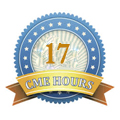
Jay Patel
Physiomove Rehab, USA
Title: Exploring the relationship of rotator muscle strength and rotation range of motion of the shoulder with the duration of play or shoulder pain in volleyball players with and without unilateral shoulder pain
Biography
Biography: Jay Patel
Abstract
Overuse injuries are common in the shoulder joint among volleyball players. The current study had 2 aims. The first was to correlate external-internal rotator strength ratio (E/I SR) and passive range of motion (PROM) of the shoulder with the duration of play in volleyball players. The second was to determine whether differences exist between dominant and non-dominant shoulders E/I SR or E/I PROM in volleyball players with and without unilateral shoulder pain. In this cross-sectional study, a convenience sample of 65 male volleyball players, aged 18-40 years, with (n=41) or without unilateral shoulder pain (n=24) was included. Shoulder external and internal rotator isometric strength and PROM were measured with a universal goniometer and a hand held dynamometer, respectively. Pearson correlation coefficient was used to find the association between shoulder E/I SR or E/I PROM and the duration of play in all players. A comparison of dominant and non-dominant E/I SR or E/I PROM among players with and without shoulder pain was done using paired t-test. No significant correlation was found between E/I SR or E/I PROM and the duration of play in players with and without pain. A statistically significant difference between the dominant and non-dominant E/I SR was noted in players with shoulder pain (p=0.018). Further, internal rotator strength (11.59±2.82 kg) was found to be more than external rotator strength (10.76±2.43 kg) in this group (p<0.010). No such difference was found in players without shoulder pain. No differences in E/I PROM between dominant and non-dominant shoulders were noted in either group. In summary, there was an imbalance in E/I SR with internal rotators being stronger than external rotators on the dominant (painful) side among volleyball players.

